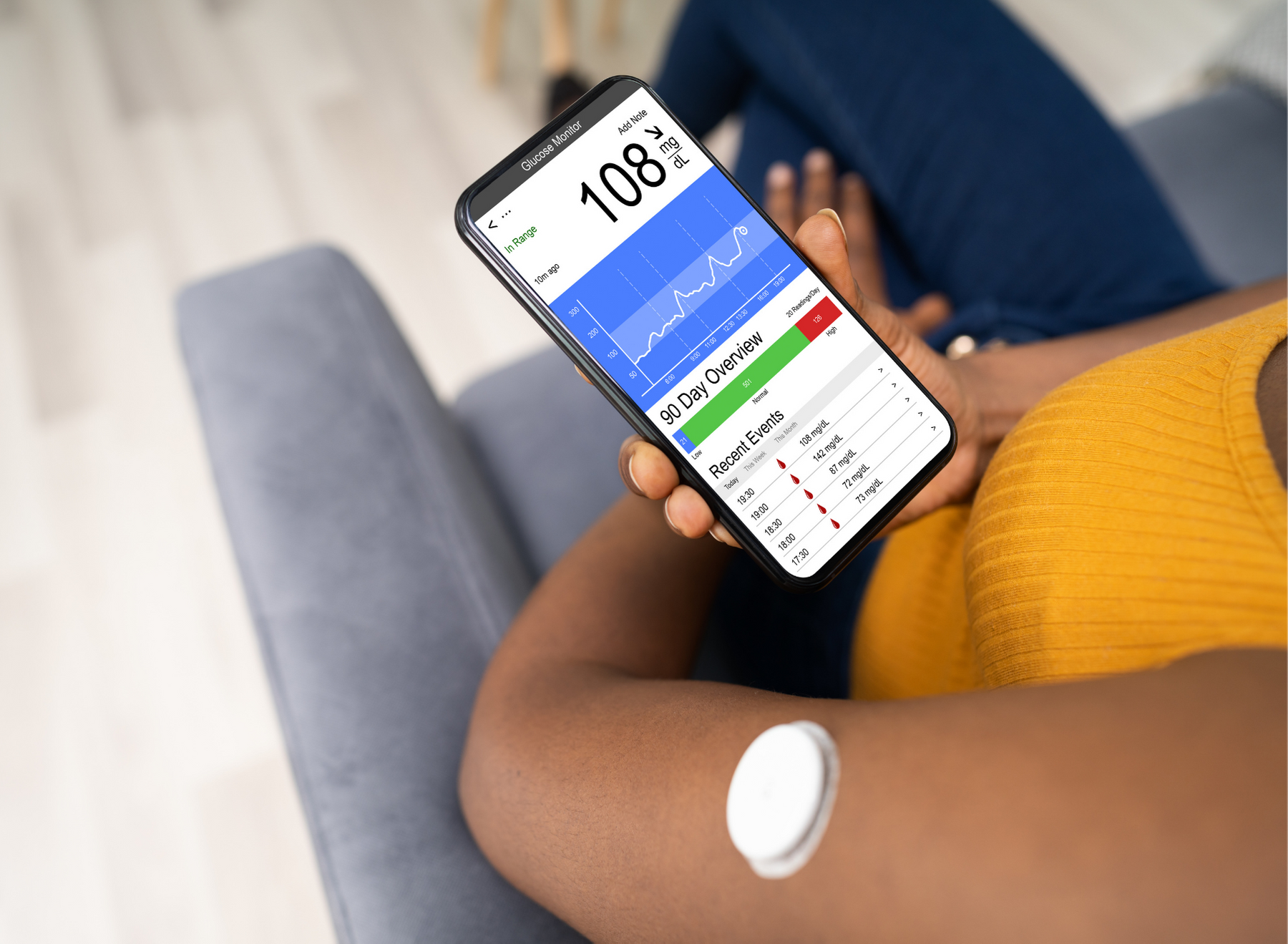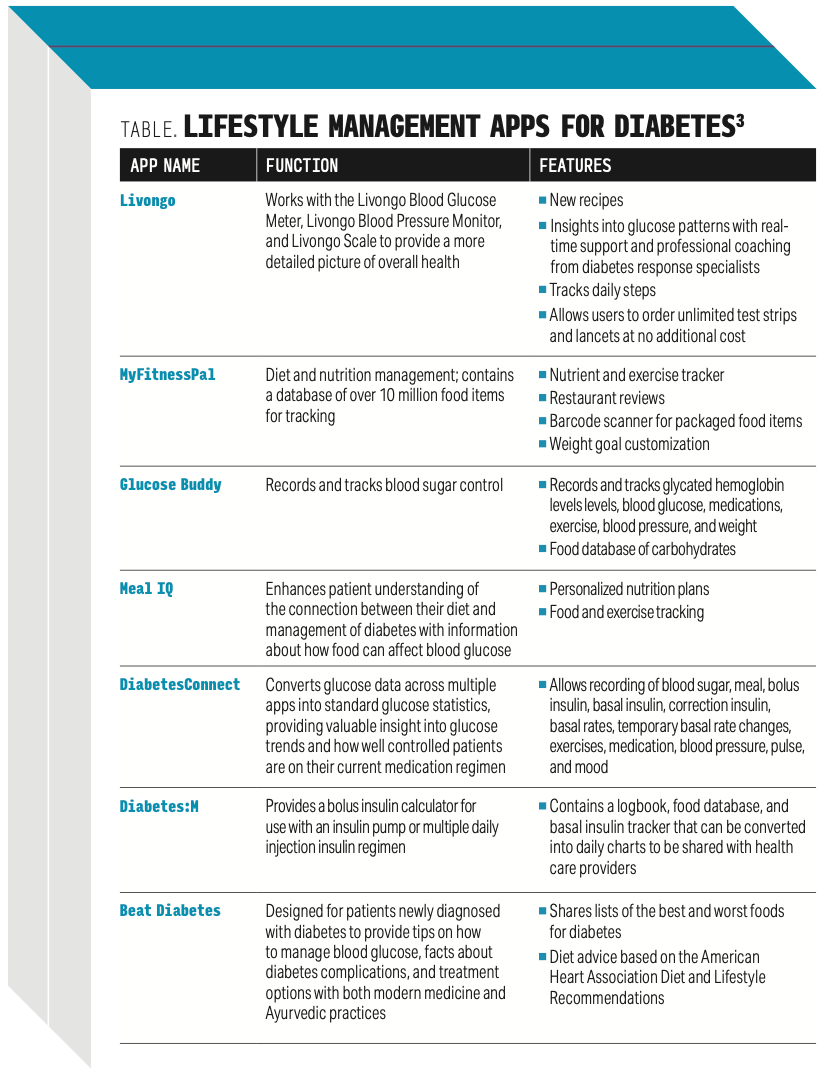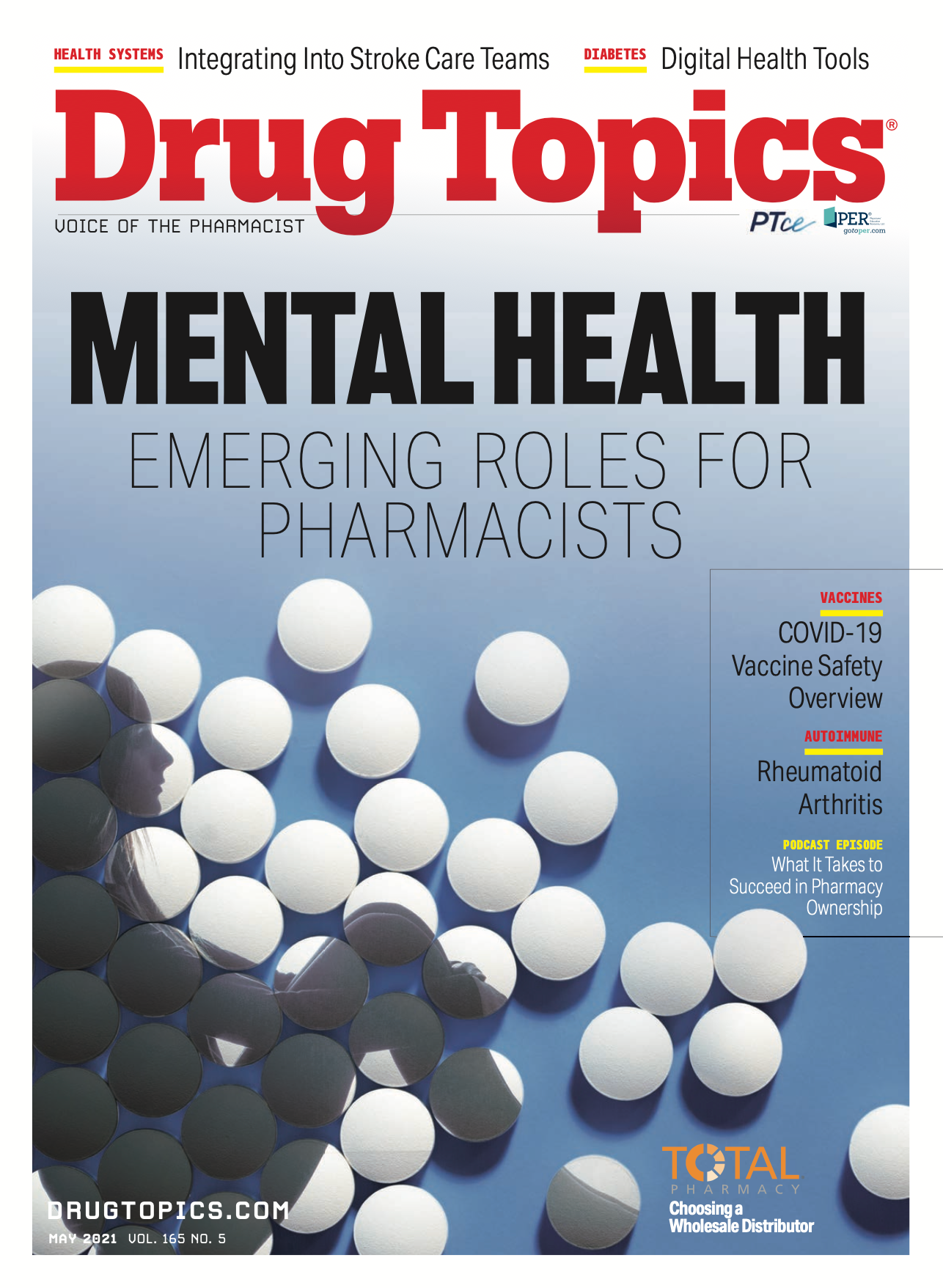Digital Health Tools in Diabetes
Technology and mobile health apps can be valuable tools in diabetes management.

As of 2020 in the United States, there are over 30 million individuals living with diabetes, around 7 million who have not received a diagnosis, and over 80 million with a diagnosis of prediabetes.1
Diabetes is an extremely prevalent disease that can lead to serious long-term complications such as cardiovascular disease, renal dysfunction, neuropathy, diabetic retinopathy, foot ulcers or infections, and even tinnitus if it is not properly managed through medications and lifestyle adjustments.2 General treatment recommendations include insulin for type 1 diabetes and several different classes of medications for type 2 diabetese, such as biguanides, sulfonylureas, thiazolidinediones, sodium-glucose cotransporter 2 (SGLT-2) inhibitors, dipeptidyl peptidase-4 (DPP-4) inhibitors, and glucagon-like peptide 1 (GLP-1) receptor agonists.2 Because primary indicators of well-controlled diabetes include blood glucose levels and A1C levels, it is imperative for patients to have a firm understanding of how to self-monitor and regularly check those values. In addition, they should be able to recognize the symptoms of hypoglycemia and/or hyperglycemia.
Although patients are able to check their levels at routine doctor visits, frequent monitoring can provide a more comprehensive understanding of whether or not their current treatment plan is effective. Through technological advancements, the ease of self-monitoring and of accessing tools through phones and computers has enabled patients to routinely monitor blood glucose and A1C levels in the comfort of their own homes. Particularly in recent years, several mobile apps have been introduced that contain simple ways to track and monitor relevant labs as well as diet and exercise habits.
Apps and Wearable Devices
Bluetooth capability has increased the expansion of health care apps and has allowed for 1 main platform to contain all of a patient’s relevant health information. For example, the OneTouch Verio Flex glucose meter will automatically synchronize its data with its corresponding OneTouch Reveal app, which patients can use to track their average blood glucose readings, food intake, medication dosing, and activity data. They can also set lifestyle goals, receive alerts about low and/or high blood glucose readings, and even share their data directly with their health care providers. Similarly, the Accu-Chek Guide, Guide Me, and Aviva Connect meters can connect to the mySugr app, allowing patients to enter any relevant diet and medication information, receive an analysis of glucose readings, and predict A1C levels. Other similar apps include the iHealth Smart meter and One Drop mobile app.3
Patients can receive instantaneous alerts as well as predictive alerts up to 60 minutes in advance for hypoglycemia and/or hyperglycemia with Medtronic’s Guardian Connect app. The data collected, which include current glucose levels with trends and glucose history, can be shared with health care providers.3
Patients who have been diagnosed with type 1 diabetes may be in need of more substantial monitoring of their insulin input and blood glucose levels. Apps such as Diabeo and Diabetes Interactive Diary contain a recording option for self-monitoring blood glucose and an insulin bolus calculator. The calculator is comprehensive, using an algorithm to consider self-monitored blood glucose values, carbohydrate intake, and physical activity. It also takes into account clinician-set parameters for the insulin-carbohydrate ratio, correction factor, and basal insulin dose. If patients routinely check their blood glucose levels with the Accu-Chek meter, they can download the Accu-Chek Connect App, which will directly sync readings and results from the meter. Patients will also be able to take advantage of the insulin bolus calculator and photographic food diary provided by the app.4
Technological advances in recent years have provided incredibly innovative methods through which patients can monitor their own health. In 2017, the FDA approved the FreeStyle Libre flash glucose monitor, a disk-like sensor inserted into the upper arm and worn there for up to 14 days. Once the sensor has been inserted, a reader can be passed over it, providing real-time glucose levels, trends, and even alarms for dangerously low or high glucose levels in some versions of the monitor.4
Glucagon App
Patients who routinely administer insulin have a high probability of hypoglycemia. As a preventive measure, glucagon kits may be given to those who are prescribed insulin. Eli Lilly created and released the Lilly Glucagon Mobile App, which shows users how to properly administer glucagon, provides frequent reminders about practicing and preparing glucagon use, and contains drug safety information and indications. Because glucagon is generally not used except in emergencies, this app can be helpful for reminding patients and their caregivers how to properly administer it if there is ever a need.3
Lifestyle Apps
In addition to medication therapy and medical management of diabetes, certain lifestyle modifications can be made to help patients better manage their symptoms and long-term outcomes. Similar to the several apps available for patients to monitor their blood glucose levels and current medications, there are lifestyle management apps that provide insight into diet and exercise (see Table 1).3

This past year has posed unique challenges. Thanks to technology, we have been able to remain connected through various platforms, which have been instrumental in health care. We have seen telehealth expand, and mobile apps such as the ones mentioned throughout this article have allowed patients and their health care providers to communicate with one another on a regular basis. For patients with diabetes, an increased accessibility to self-monitor and regularly communicate with their providers may help optimize their treatment plans and decrease the risk of long-term complications.
About the Authors
Sandhya Vijapurapu is a PharmD candidate at Duquesne University School of Pharmacy in Pittsburgh, Pennsylvania, who anticipates graduating in spring 2021.
Jonathan Ogurchak, PharmD, CSP, is the CEO and cofounder of STACK, a pharmacy information management platform. He also serves as preceptor for a virtual advanced pharmacy practice experiential rotation for specialty pharmacy.
References
- National Diabetes Statistics Report, 2020. CDC. August 28, 2020. Accessed April 1, 2021. https://www.cdc.gov/diabetes/data/statistics-report/index.html. Last reviewed
- American Diabetes Association. 9. Pharmacologic approaches to glycemic treatment: Standards of Medical Care in Diabetes–2021. Diabetes Care. 2021;44(suppl 1):S111-S124. doi:10.2337/dc21-S009
- Doyle-Delgado K, Chamberlain JJ. Use of diabetes-related applications and digital health tools by people with diabetes and their health care providers. Clin Diabetes. 2020;38(5):449-461. doi:10.2337/cd20-0046
- Shan R, Sarkar S, Martin S.S. Digital health technology and mobile devices for the management of diabetes mellitus: state of the art. Diabetologia. 2019;62(6):877-887. doi:10.1007/s00125-019-4864-7
